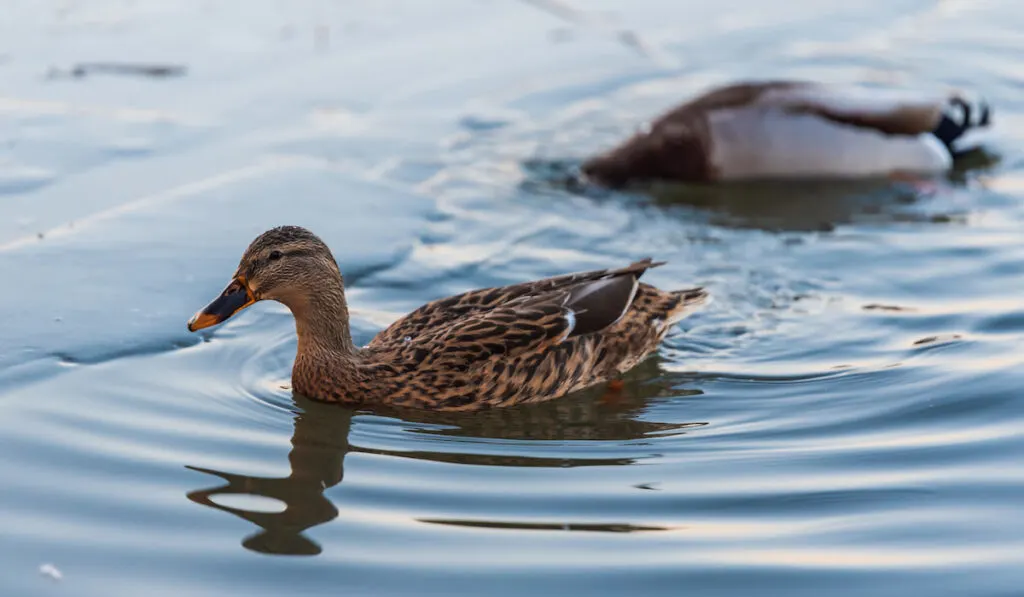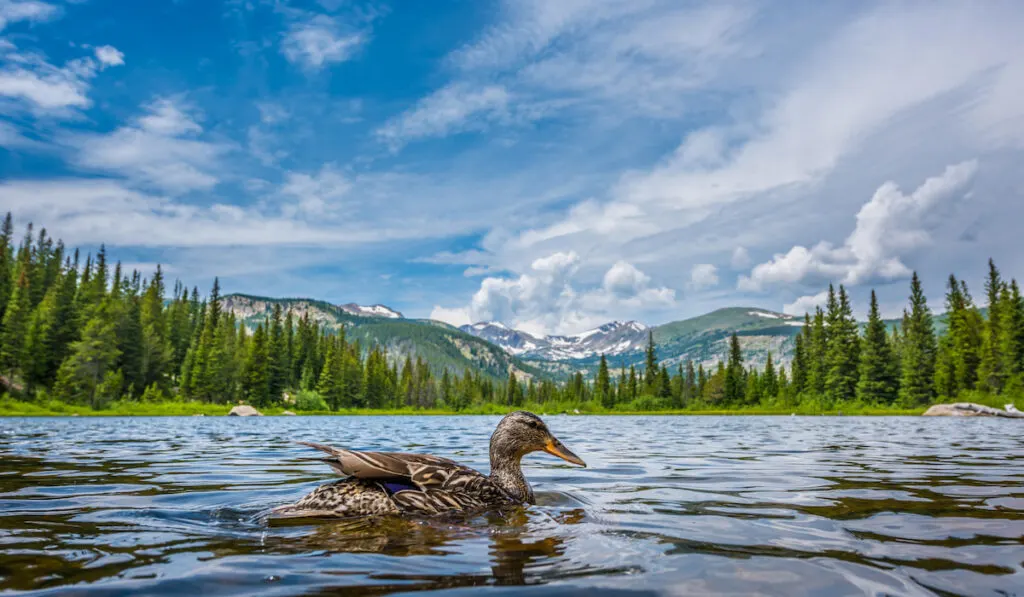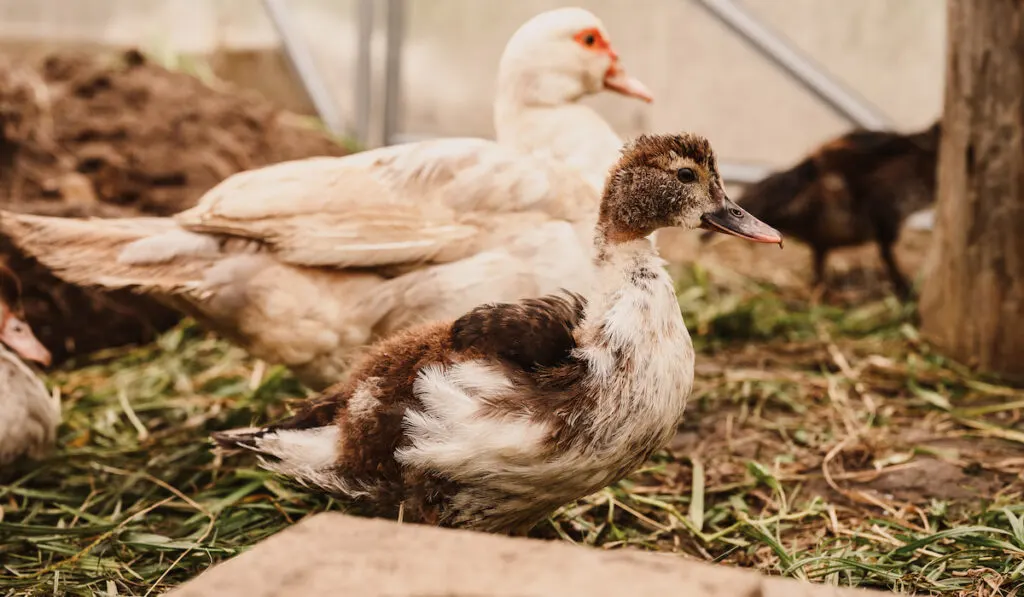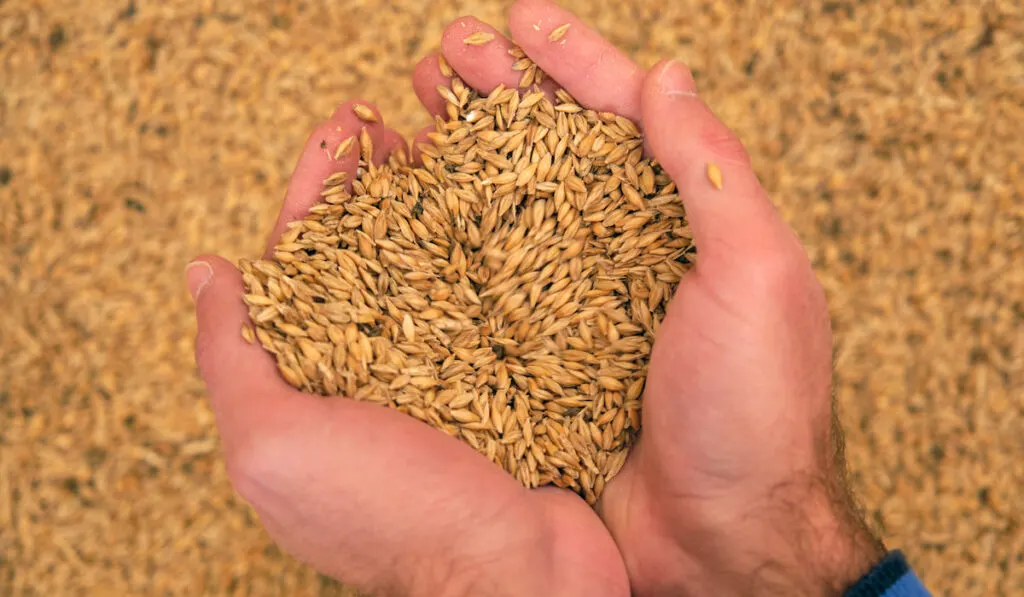Owning ducks can be a lot of fun.
Whether you’re raising them for pets or other reasons, there’s a lot to learn to make sure your ducks have a nice place to grow and live.
Part of that is learning about how different temperatures affect their moods and health.
We get questions all the time about how ducks do in the cold. It’s easy to understand why.
In the winter, the outdoor temperature can drop significantly.
It’s hard for people to stay outdoors for long periods, so naturally, we wonder how our animals are doing outside.
Considering how much time ducks spend outside and in the water, it’s important to know what constitutes “too much” for them when it comes to cold weather.
Do ducks get cold in the water? Let’s find out!

Table of Contents
Ducks Have Natural Insulation
Fully-grown ducks don’t experience cold temperatures like you and me.
Ducks are more resistant to cold weather than most other birds.
That matters a lot when you’re a bird that spends a lot of time in the water where temperatures can get even colder than the air outside.
Evolution has been kind to ducks. To protect them from cold water, they have a preen gland that produces sebum.
Sebum is an oil situated in the preen gland near the duck’s tail.
As they preen themselves (you’ll see ducks rubbing their beaks all over as a way to clean their feathers), the oil is released from the gland and gets spread all over their body.
Once the oil is coated all over the duck’s feathers, the feathers essentially become waterproof.
Very little, if any at all, water can get under the feathers where they might make the duck feel cold.
Besides the sebum, ducks, have feathers.
Feathers come in different shapes and sizes to provide thick layers of insulation for the duck, whether in or out of the water.
Down feathers are known to be the most insulated feathers and keep ducks warm in even freezing temperatures.

Ducks Have an Amazing Blood Exchange System
OK, we know what you’re probably thinking.
Ducks have great feathers that keep them warm, but what about all those ducks we see swimming in frigid waters in the winter?
Their legs and feet don’t have feathers, so how do they keep their feet warm?
Amazingly, ducks have what’s called a blood exchange system in their legs.
If you’ve never heard of it, don’t worry, most people have no idea.
With the exchange system, a duck’s veins and arteries are so close together that, as warm blood flows from the heart down into their legs, it warms the colder blood that’s on its way back to the heart from their feet.
As a result, the duck’s legs and the rest of their body are better able to maintain their warm interior temperature.
Ducks are also able to do just fine with cold legs in the water.
The temperature variance between their legs and the rest of their body can be significant.
Their legs can easily manage much lower temperatures than, say, a human could handle.
We Can’t See Duck Feet Moving
One thing to remember about whether a duck’s feet are getting cold in chilly water is that what we see on the surface is usually much different than what’s going on underwater.
While ducks can appear to be very serene and calm as they float across a lake or pond, their feet and legs are often churning furiously to keep them steady.
All of that motion goes on out of sight but contributes a great deal to keeping things warm.

Keep a Place for Ducks to Warm Up
Even though ducks can withstand water with low temperatures, eventually things will get cold enough that they’ll want to get out.
When that happens, every duck owner should make sure their ducks have a safe place where they can warm up.
Ducks love to group together to shield each other from chilly winds.
They also do well in shelters that have straw insulation in them. Straw can be purchased fairly easily all year, and they’ll love a fresh layer of straw where they go to rest.
As a best practice, lay some straw inside the pen but also in the area outside of the pen.
This will help your ducks feel warmer as they go outside for some fresh air every day.
The last thing you want to do with the pen is to make sure it’s well-ventilated.
Ducks breathe out a lot of moisture, and you don’t want that trapped inside the pen where it can lead to lower temperatures.
A simple fix is to install some vents on the walls or ceiling. Keep them up high so they aren’t a safety hazard for your ducks.

Think About High-Calorie Nutrition
Another thing you can do to prevent your duck from getting too cold in the water is to feed them high-energy food that will fatten them up and keep them warm through the cold nights.
You don’t have to spend a ton of money to get high-fat, high-calorie food.
Ducks love things like peanut butter, oatmeal, corn, and other grains.
This will help keep their weight up in the winter when grass and other food in the water are harder to come by.
In the end, ducks are very well-equipped to handle low temperatures in the water.
As a general rule, if your ducks are in the water, then the water isn’t too cold for them.
Their bodies are uniquely equipped to spend prolonged periods of time in colder water.
If, however, you notice that your ducks are not venturing out into the lake or pond as they usually do, then the cold could be an issue.
Toy around with moving your pen closer to the water so it’s easier to go back and forth, and try to amp up their nutrition to plump them up a bit.
They’ll love you for it and will be a lot happier getting through the winter.
